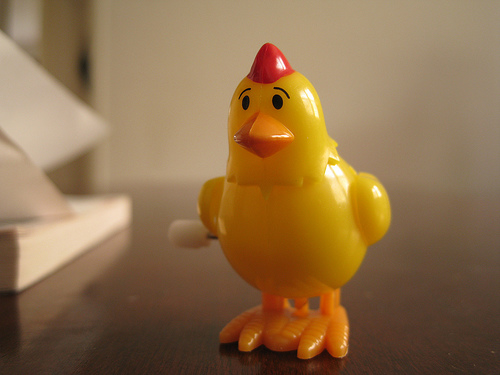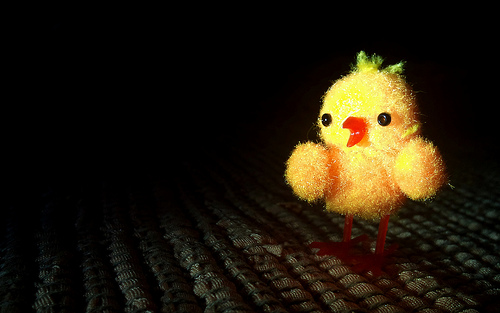
It's a joke to say that something "tastes like chicken." But these days, I don't know if you have noticed, but even chicken doesn't taste like chicken anymore. Either that, or it tastes way too much like chicken. At the same time, it's starting to seem like white meat and dark meat chicken both taste the same, and they both taste bland.
Blame the monolithic corporate agricultural apparatus that brings meat to our grocery stores. Most chickens are raised on a diet of bland pelleted food, which in turn creates bland chicken meat. Most chickens get little exercise, they just lie around all day eating, which is why the difference between the white meat and the dark meat is minimal.
Exercise is what normally makes the difference between white meat and dark meat. Both forms of meat are muscle, but dark meat is vascularized thanks to use. Under ordinary circumstances, chickens (and turkeys, and other domestic fowl) use their legs a great deal, which is why their thighs are dark. But since the chicken is an essentially flightless animal, their breast muscles (used to control the wings) are rarely used, and thus are non-vascular white meat.
(Incidentally, this is why duck and other game birds taste so "gamey." Their meat is basically all dark meat, because wild animals can't afford to build a lot of muscle that they aren't using on a regular basis.)

Image courtesy Flickr/shelfappeal
But in this day and age, growth hormones and genetics have more to do with the meat on a chicken than the chicken's own movements. The overwhelming majority of commercial meat chickens are a breed called Cornish Cross, a genetic freak which grows so fast that, if not slaughtered by eight weeks of age, will die within a week or two from cardiac arrest.
It's a recipe for bland.
To make matters worse, most chickens are "water processed." This means that after the birds are slaughtered and plucked, their carcasses are suspended in tanks of saltwater to chill them. The carcasses absorb the saltwater (and the bacteria), which results in meat that is bland, flavorless, pale and watery.
Then on top of that, you have some manufacturers who have decided to combat this by injecting their chicken with "flavor enhancements." Read the fine print on your package carefully: You may be buying meat that is up to 15 percent saltwater plus artificial chicken flavor. Given the price of meat these days, 15 percent water by weight is a significant cost! And in my experience, these so-called enhanced cuts of meat taste brilliantly fake, more like Doritos chips than actual chicken meat.

Image courtesy Flickr/yanajenn
The ideal solution would be to find a source of local pasture-raised chicken. But the FDA and the USDA have aggressively pushed against this potential industry, so it's virtually impossible to find a supplier who can match the standards.
The network of farmers' markets is growing all across America, but you will mainly find produce at these markets, because the federal standards for produce harvest and storage are far more lenient than those for meat. Food safety is a bigger issue with meat than it is with produce, of course, but that's not the whole story. Meat is a much larger chunk of the financial pie, and Big Ag has a lot of money invested in pushing the little guys out of business.
If you really want good-tasting chicken these days, you basically either have to buy it under the table on the black market, or you have to raise and slaughter them yourself. Neither option is exactly practical for most families who are just looking for a way to put food on the table on a weekday night.

Image courtesy Flickr/iRebic
There are upscale brands that are better in all respects, and which are available for legitimate sale at grocery stores like Whole Foods. Naturally, these cost a little bit more. And by "a little bit," I mean "twice as much." I recently went looking for a source of pasture raised, non-injected-with-flavored-water chickens, and I was horrified at the cost.
Of course, that's what got us here in the first place. If consumers like me weren't so unwilling to pay $50 for a good whole chicken, there wouldn't be such a brisk business in $6 bad whole chickens. It's a sad state of affairs, and I wish I had the answer.
Main image courtesy Flickr/the pain of fleeting joy

1 comments